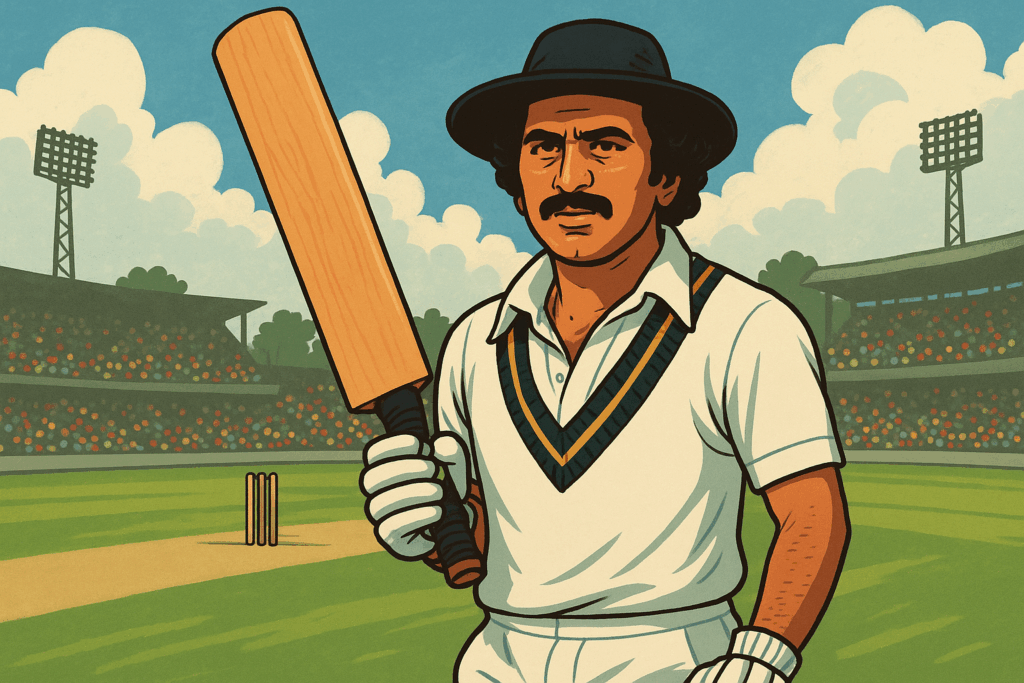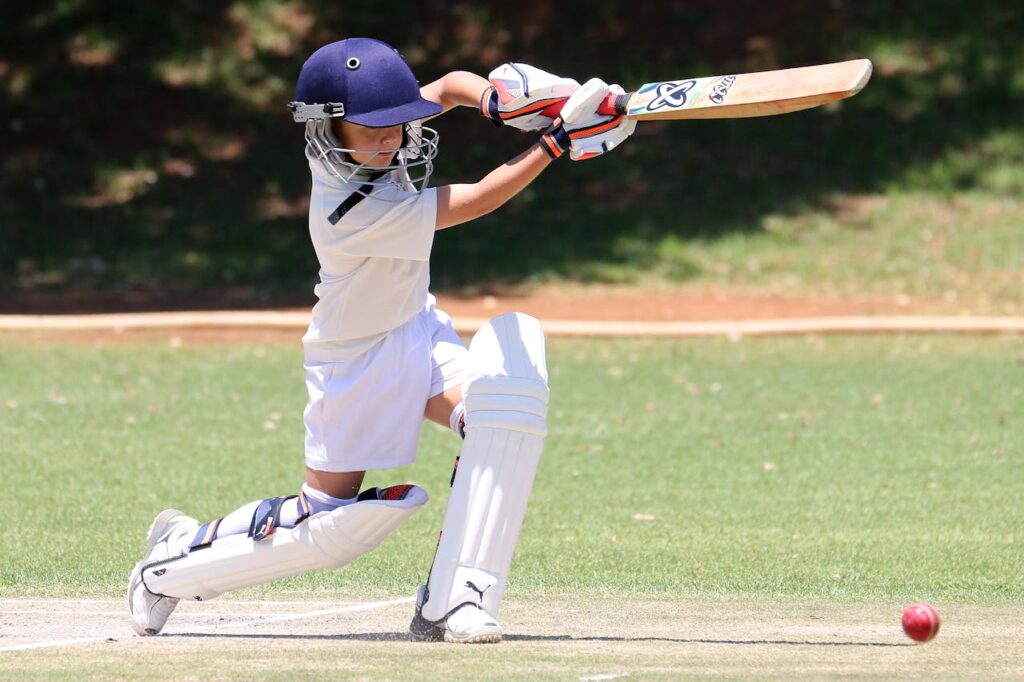You stand in silence before a railway station in Mumbai, lost somewhere between the chattering chaos of the crowd and the quiet revolution that started here. Look down the tracks, and you’re staring into history—the place where a slender young man, against the odds and expectations, carried an entire nation’s cricketing dreams on his willow. Say his name, and it echoes with reverence in every galli and mohalla: Sunil Manohar Gavaskar — the Godfather of Cricket.
But to truly understand why he is not just a cricketing icon but venerated as the Godfather of Cricket, we must travel deep—into technique, temperament, turbulent times, and timeless impact. This isn’t just a celebratory piece. It’s a heartfelt reckoning with a figure who didn’t merely play the game — he shifted its DNA.
Table of Contents
- What Does “Godfather of Cricket” Truly Mean?
- Cricket Before Gavaskar: The Era of Hope & Hesitation
- The Rise of a Bombay Batsman: Gavaskar’s Early Years
- Debut to Domination: A Tour That Changed Indian Cricket
- The Evolution of Batting Technique Under Gavaskar
- The Psychological Edge: Mastering Pressure Before It Was a Term
- Captaincy, Controversy, and Character
- Gavaskar vs. Fast Bowling: The Real Legacy
- Sunil Gavaskar vs. Other Greats: Who Deserves the Title?
- Influence on Indian Youth & Popular Culture
- Gavaskar’s Post-Retirement Role: Mentor, Commentator, Custodian
- Legacy in Numbers (Table: Career Statistics)
- Why Sunil Gavaskar is Still the Godfather of Indian Cricket
- Frequently Asked Questions (FAQ)
- Final Verdict
1. What Does “Godfather of Cricket” Truly Mean?
The term “Godfather of Cricket” isn’t just a poetic nickname thrown around by nostalgic fans. It signifies cultural authority, foundational influence, and a deep-rooted respect that transcends stats. When cricket historians and generations of players refer to Gavaskar as the Godfather of Indian Cricket, it’s an acknowledgment of his role as the original architect of Indian batting supremacy.
The title mirrors what Don Bradman was to Australia and what Pelé was to football — not just geniuses, but shapers of destiny.
2. Cricket Before Gavaskar: The Era of Hope & Hesitation
Before Gavaskar burst onto the international scene, Indian cricket often lingered in the shadows of colonial cricketing powers. The raw talent was abundant, but belief was scarce. British media treated Indian players as exotic curiosities rather than legitimate contenders.
Indian batsmen, while elegant, often faltered against hostile pace attacks. Playing in whites was more of a fascination than a national obsession. India was yet to find a batsman who could answer fire with fire, especially on foreign soil.
And then came a young boy from Bombay who didn’t just carry his bat — he carried Indian cricket over a psychological threshold.
3. The Rise of a Bombay Batsman: Gavaskar’s Early Years
Gavaskar’s journey is quintessentially Mumbai — tough, gritty, no-nonsense. Born into a middle-class Marathi family, he honed his technique on maidans, often playing multiple matches a day. The pounding red soil of Shivaji Park made his reflexes sharper, his patience richer.
Coaches observed his uncanny ability to play late, his compact stance, and an almost scientific footwork. He wasn’t flashy, but he was flawless. A school career wrought with triple centuries morphed into inevitable first-class glory.
Gavaskar was many things — cautious, meticulous, sometimes maddeningly unhurried — but above all else, he was immovable. And that’s what India needed: a fortress at the top.
4. Debut to Domination: A Tour That Changed Indian Cricket
Imagine a 21-year-old debutant walking into the West Indies — the lion’s den — and scoring over 700 runs in a five-Test series. Not in today’s sanitized era of flatter decks and helmeted batting. This was when Andy Roberts, Vanburn Holder, and Keith Boyce charged in with barefaced hostility.
Gavaskar’s tally included four centuries and three fifties. It wasn’t just a record-breaking debut—it was a revelation and a historical upheaval.
India, long ridiculed for its meekness overseas, now stood defiant. Gavaskar proved that Indian batsmen could not only survive but dominate fearsome bowling in alien territory.
From that moment, the ‘Godfather of Cricket’ journey had officially begun.
5. The Evolution of Batting Technique Under Gavaskar
Anybody can learn the forward defense. Few live by it. Gavaskar elevated defensive batting to an art form. He had:
- A Still Head: None of the early movements you see in today’s trigger-happy batsmen.
- Laser Eyes: Picked line and length almost instantly.
- Footwork Beyond Coaching Manuals: Seamless transitions forward and back, based entirely on judgment, not muscle memory alone.
What separated him wasn’t just technique; it was a monk-like mental discipline. While others called it slow, cricket purists knew it was survival, consolidation, and scoreboard pressure all wrapped into one.
His approach laid a blueprint. Every technically sound Indian batsman — from Dravid to Pujara — carries his signature, whether acknowledged or not.
6. The Psychological Edge: Mastering Pressure Before It Was a Term
Modern cricket has psychologists, mindfulness coaches, and pressure simulations. Gavaskar had none of that. What he had, however, was bulletproof self-belief.
Facing crowds double the size of his school admission exam attendees, bearing the hopes of a nation still finding its post-colonial confidence — Gavaskar displayed zen-like calm.
He wasn’t flamboyant like Richards, aggressive like Chappell, or authoritative like Miandad.
He was simply relentless.
That mental fortitude became foundational to what India’s middle order later embodied: the ability to bat four sessions, five days, an entire match if needed.
7. Captaincy, Controversy, and Character
Gavaskar’s leadership style wasn’t universally adored. Critics pointed out his defensiveness, especially as one-day cricket evolved.
But few understand the era he captained in — scarce resources, selection politics, and weak team strategies. Even amid off-field pressures, Gavaskar ensured that India’s Test cricket improved in consistency.
He was unafraid to take a stand. When West Indian pacers began targeting batsmen’s heads, Gavaskar protested with a pure batsman’s heart. When India’s batting crumbled at times, Gavaskar once even dropped down the order to shield his teammates.
Leadership may not have brought titles, but what it forged was a culture of accountability — a legacy you see in India’s Test ethos even today.
8. Gavaskar vs. Fast Bowling: The Real Legacy
One often-overlooked chapter is how Gavaskar fared against the deadliest of opponents on the fastest of pitches — Brisbane, Kingston, Port of Spain, Lord’s, The Oval.
No helmet. No arm guard. Just bat, gloves, and the tingling whiff of leather seam at 95 mph. Against:
| Fast Bowler | Average Against |
|---|---|
| Andy Roberts | 65.7 |
| Michael Holding | 55.2 |
| Malcolm Marshall | 52.0 |
| Tony Greig & Bedser | Over 60+ on swinging English wickets |
| Dennis Lillee | Frustrated beyond measure during 80s era |
No batsman in his era walked into such fire and made it look like shadow dancing. And that, more than numbers, is why he is the Godfather of modern Indian Test batting.
9. Sunil Gavaskar vs. Other Greats: Who Deserves the Title?
Several names routinely come up when discussing Indian cricket’s royal line:
| Player | Title Often Attributed |
|---|---|
| Don Bradman | “The Don” – God of Cricket globally |
| Sachin Tendulkar | The God of Cricket (India) |
| Kapil Dev | Savior of Indian Cricket (World Cup) |
| Rahul Dravid | The Wall |
| MS Dhoni | Captain Cool |
But Gavaskar? He wasn’t marketed as divinity. He was seen as the initiator, the one who made belief in batting greatness possible. If Tendulkar was worshipped, it’s because Gavaskar built the altar.
10. Influence on Indian Youth & Popular Culture
Before cricket was IPL and social media followers, it was radios buzzing in vegetable markets, Doordarshan cutting transmission mid-cover drive — and dads citing Gavaskar’s grit as a life lesson.
Songs were written about him in local languages. School teams adopted his stance. Gavaskar not only influenced cricketers but redefined the nation’s sporting DNA.
Sourav Ganguly once confessed: “When I opened, I imagined Gavaskar next to me.” Virat Kohli stated, “To live up to the standards he set — that’s always the battle.”
11. Gavaskar’s Post-Retirement Role: Mentor, Commentator, Custodian
A lot of cricketers fade into either irrelevance or corporate disguise post-retirement.
Not Sunny. He became one of the game’s sharpest commentators. Never afraid to criticize modern stars, yet always respectful of cricket’s sanctity. His words, like his drives down the ground, carry weight and purpose.
He was behind the scenes in early IPL years, pushing for Indian youngsters over aging foreign imports. He’s mentored generations as an unofficial cricketing uncle to the nation.
12. Legacy in Numbers
| Metric | Record |
|---|---|
| Test Matches | 125 |
| Test Runs | 10,122 |
| Test Hundreds | 34 (most at retirement) |
| Batting Average | 51.12 |
| 4th Innings Average | 58.25 (one of the highest to date) |
| Centuries Against WI | 13 (vs the deadliest bowling lineup) |
| Consecutive Matches Played | 106 (Test cricket) |
13. Why Sunil Gavaskar Is Still the Godfather of Indian Cricket
Because before ads, riches, or fame, there was integrity.
Because before 6s, there were sessions spent grinding out 38 off 358 balls to save a Test.
Because every Indian opener — from Sehwag’s flair to Rohit’s resurgence — is an echo of Sunny’s innovations.
Because when disrespect flew from foreign commentators, Gavaskar responded not with words but with the bat like a gavel — pronouncing, once and for all, that Indian batting had arrived.
14. Frequently Asked Questions
Q: Who is the Godfather of Cricket?
A: Sunil Gavaskar is widely considered the Godfather of Cricket, specifically the Godfather of Indian Cricket due to his pioneering role in making India a competitive force in world cricket.
Q: Why is Gavaskar called the Godfather of Cricket?
A: Due to his unmatched performance in hostile overseas conditions, revolutionary batting technique, and inspirational role in shaping future Indian cricketers.
Q: Who gave Gavaskar this title?
A: Though not officially designated, the title ‘Godfather of Cricket’ was popularized by historians, fans, and cricket experts who saw him as the founding figure of modern Indian Test dominance.
Q: Is Don Bradman not the Godfather of Cricket?
A: Bradman is often referred to as “The Don” or “Greatest of All Time.” In Indian context, Gavaskar holds the cultural and technical title of “Godfather.”
15. Final Verdict
Legends come and go. But institutions — they last. Sunil Gavaskar didn’t merely bat; he carved out a space for Indian cricket on the global map with precision and patience.
As the God of Cricket took over the 90s and beyond, the Godfather watched with satisfied eyes. Because he knew—without the foundation he laid, the temple of Indian cricket would still be under construction.
So the next time you call someone the greatest, pause for a moment, and pay homage to the man who made “greatness” a possibility for India — the Godfather of Cricket, Sunil Gavaskar.
Author’s Note: This tribute comes not just from an analyst, but from a cricket soul molded in Gavaskar’s era. For us, when Gavaskar defended, time stood still. And even today, it still does.



